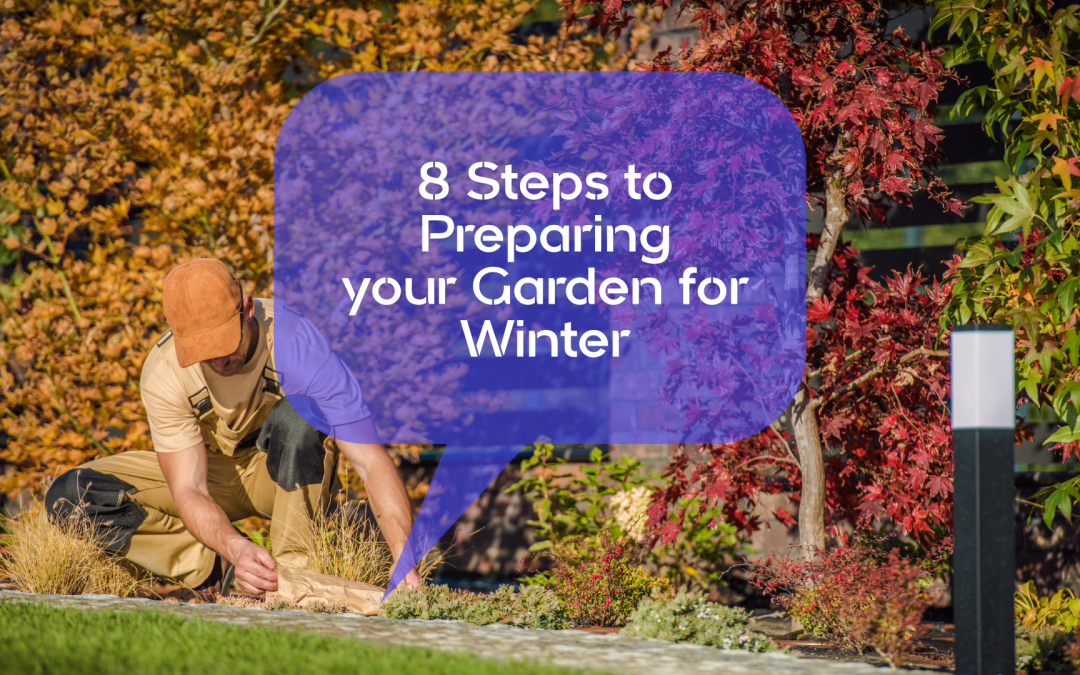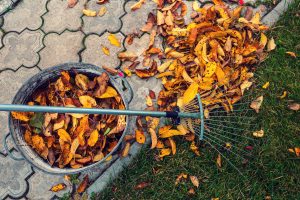With the weeding, watering, nurturing and harvesting out of the way, it can be really tempting to just kick back and relax and leave your
garden untouched until next year.
However, that may not set you up for success when the next growing
season hits, and around here, we need all the time we can get. Ignore
your garden at your own expense, these steps will only help you save and
improve on your investment.
Let’s go through 8 steps you can take to better prepare your garden for the
winter.
PREPARE HERBS FOR WINTER
There is no one-size-fits-all trick for
preparing your herbs in the winter. Some herbs are hearty and will need
little assistance, while others are sensitive to the weather changes and
will need your help.
Basil: This herb is a sensitive sort, so
handle with care. They won’t survive outside during the winter. Dig them up
and pot them over the winter so that you can return them to ground in
spring and elongate their season.
Chives: These guys are fairly hardy, but need your intervention. Dig up and
pot then allow the foliage to die down and freeze for several weeks. Bring
the pot indoors to a sunny but cool spot and just be sure to keep them
watered over the winter.
Oregano: Hardy-ish plant, with a little care. They are best with at least a little
protection from the cold. Consider throwing on a layer of straw mulch.
Parsley: A biennial, will withstand a light frost. In Zone 5 or colder, cover
them at night. They are not easily transplanted due to the long taproot
so you may be better off restarting in the spring.
Rosemary: An evergreen perennial that needs outdoor protection. If you’re in Zone 6 and 7 you can get away with
covering and protecting them over the winter. Zones 5 and colder, you’re
encouraged to pot them up and bring them in for the winter.
Sage: In most places, these are perennial plants and do not need
special treatment. Before frost stops it’s growth, cut off a brand or two and
dry to use in things like stuffing over Christmas.
Thyme: This is a near indestructible plant. Being a true perennial, it will go
dormant in the fall and revive itself in spring.
PREPARE PERENNIALS FOR WINTER
The more you can prepare your perennials, the better they will return in
the spring. It’s tempting to let them just down what they do naturally, and you
can, though, proper perennial preparation will only stand to improve the plant health and future yields.
Make sure to water your perennial flowers and shrubs in the fall.
Before a heavy snowfall, cover pachysandra with a mulch of pine
needles several inches deep.
Move potted chrysanthemums to a sheltered spot when their flowers fade.
Water well and cover with a thick layer of straw to overwinter them.
When a frost blackens the leaves of dahlias, gladioli, and cannas, carefully
dig them up and let them dry indoors on newspaper for a few days. Then
pack them in styrofoam peanuts, dry peat moss, or shredded newspaper
and store in a dark, humid spot at 40° to 50°F (5° to 10°C) until spring.
Many perennials can be left to be cut back in the spring, especially those
with bountiful seed heads such as coneflowers or rudbeckia, as the birds
will enjoy their seeds through winter. However, there are some perennials
which are best cut back to avoid spreading diseases—such as powdery
mildew—especially bee balm, phlox, and hostas. See which perennials to
cut back. When cutting back, wait until the ground has frozen hard and the
foliage has died. Leave about 3 inches of stem and mulch them with a thick
layer of leaves or straw.
COVER YOUR GARDEN BEDS
There is nothing worse than piles of soggy leaves left all over your lawn, so
why not use those leaves for an actual purpose? There are a couple of things
you can do with them.
You could take a tarp or sheet, spread some of the leaves over it, and then
place it in the corner of your yard to give your local pollinators some kind
coverage.
Or, you can rake the leaves into loose piles and run the lawn mower over
them, to create mulch for your perennial and bulb beds.
Leaves can also be added to your compost as well.
MANAGE YOUR COMPOST
Speaking of compost, it’s recommended to add any compost in
late autumn in order to let the soil soak up the nutrients over winter.
Take the time to turn your compost pile or the contents of your compost bin one
more time before hard frost. This introduces oxygen and speeds up
decomposition. You want that.
STORE YOUR SEEDS
ATTEND TO YOUR BIRD FEEDER
First, take some time to really clean out the feeders. They can often catch
bits of bugs and seeds which should be washed out. Then, refill the bird
bath with new water.
Take the time to do the same with your bird feeders;
clean them out using soapy water and a stiff brush, and then refill and
replace. We recommend you fill them with quality bird seed and not the
cheap stuff that mostly ends up kicked out of the feeder onto the ground.
TURN OFF THE WATERING SYSTEM
If you haven’t already turned off your water, do it! You don’t want the hose or
irrigation connected when it frosts, or you may have damage. In warmer
climates it may be possible to simply disconnect the system from a hose
spigot and allow the water to drain out, but in colder climates you will want to
either blast all the water out with an air compressor or just bring everything
inside for the winter.
GIVE YOUR TOOLS CARE AND ATTENTION
Drain the fuel tank on your lawn mower or any other power
equipment. Consult the owner’s manual for other winter maintenance.
Scrub down and put away your tools. Some folks oil their tools with
vegetable oil to avoid rust. Find out how to care for your gardening tools.
Empty all of your outdoor containers to keep them from cracking during
the winter.
Store them upside down. Hang a bucket over a hook in your
Tool shed or garage and use it to store hose nozzles and sprinkler
attachments.




